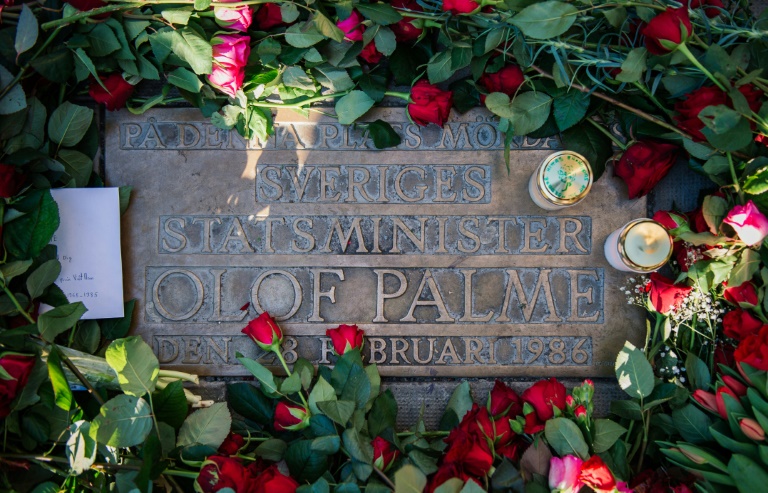Swedish prosecutors on Wednesday named their main suspect in the 1986 killing of prime minister Olof Palme, closing the murder case that has gripped the Scandinavian country for more than three decades.
The suspect was named as Stig Engstrom, a former advertising consultant known for his staunch opposition to Palme’s leftwing policies and who is now dead.
Palme was gunned down on the evening of February 28, 1986, after leaving a Stockholm cinema with his wife, having dismissed his bodyguards for the evening.
He was shot in the back by his assailant, who fled the scene and left the 59-year-old to die in a pool of blood on the sidewalk.
The gruesome murder shocked Swedes, and the country is said to have “lost its innocence” that day.
More than 10,000 people have been questioned over the years, and 134 people have confessed to the crime though none has been credibly tied to it.
Chief prosecutor Krister Petersson said they had zeroed in on Engstrom as the main suspect.
Read Also: Sweden To Give ‘New Information’ On Assange Rape Probe
“Because he is dead, I can’t press charges against him, and have therefore decided to close the investigation,” he said.
Petersson acknowledged to AFP that while “only a court can determine guilt… I am convinced there is evidence of reasonable suspicion.”
– The right call –
Engstrom, who was 52 at the time of the murder, was questioned as a witness early on but police deemed him unreliable after he changed his story several times.
Media have suggested over the years that he was trying to cover up his role as the gunman. He died in 2000 aged 66.
Palme’s son Marten told Swedish Radio he believed prosecutors made the right call.
“I think Engstrom is guilty. Given the current situation, I think it is reasonable to close the investigation,” he said.Another man was convicted of the crime in July 1989 after Palme’s widow identified him in a widely criticised line-up.
But Christer Pettersson — a petty criminal and drug addict who is no relation to the current chief prosecutor — was freed months later by an appeals court which dismissed her testimony on a technicality.
Pettersson died in 2004, while Palme’s widow passed away in 2018.
– Probably acted alone –
After Wednesday’s announcement Swedish Prime Minister Stefan Lofven said it had been “a day full of emotions” and stressed that it was “not the government’s place to judge prosecutors’ conclusions.”
“For a country’s prime minister to be murdered is a national trauma. It is my hope that this wound can now heal.”
Petersson said investigators believe Engstrom acted alone, but could not “completely dismiss (the idea) that he could have been part of a conspiracy.”
He said Engstrom told investigators early on that he had arrived at the scene moments after the shots were fired, and left before police arrived.
Engstrom said he had turned Palme on his side, but police were never able to confirm that assertion.
“What was strange when we went through the material was that none of the other witnesses have identified him as being present at the crime scene,” Petersson said.
Yet, “he told investigators quite a bit about how he acted at the crime scene”.
– ‘Adverse opinion’ –
Petersson stressed Engstrom’s political views as a possible reason for wanting Palme dead.
A Social Democrat known as a great orator, Palme was a controversial figure who infuriated Washington with his vocal opposition to the US war in Vietnam.
He also backed communist governments in Cuba and Nicaragua.
At home, he was at odds with the country’s business leaders and military, and spoke out against nuclear power.
Engstrom “had an adverse opinion of Palme and his politics,” Petersson said.
“We know that he was struggling with financial problems… He also had alcohol problems,” the chief prosecutor added.
He also noted that Engstrom had access to weapons through acquaintances and had weapons training.
The gun used in Palme’s murder has never been recovered, though nearly 800 weapons were tested in the course of the long investigation.
“We have no clear information that can place a weapon in the hands of Stig Engstrom,” Petersson stressed.
“But considering what happened, he must have had a weapon in his hand that night,” he said.
Some Swedish legal experts said Wednesday they doubted whether the prosecution’s case would have held up in court, especially with no technical evidence, while others expressed concerns about naming a dead man a suspect as he can’t defend himself.
Swedish police botched the investigation early on.
Crucially, they failed to cordon off the murder scene properly, allowing onlookers to walk around and destroy potential forensic evidence, a blunder that still haunts investigators today.
AFP
